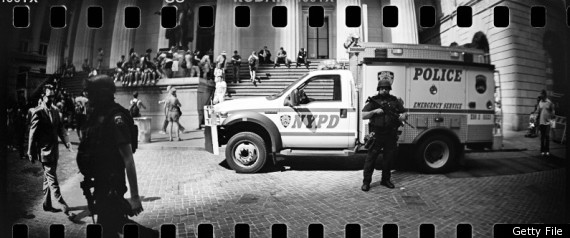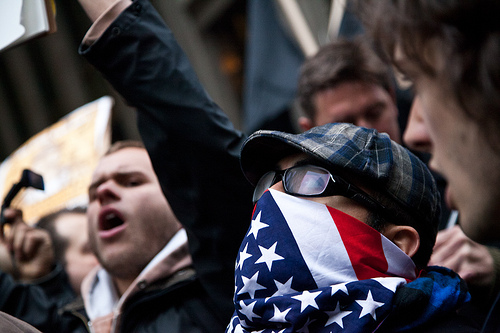 Guardian | Police have angered Occupy London activists after listing the movement among terrorist groups in an advisory notice sent to the business community in the City.
Guardian | Police have angered Occupy London activists after listing the movement among terrorist groups in an advisory notice sent to the business community in the City.The document issued by City of London police, headed "Terrorism/extremism update for the City of London business community", included a detailed account of recent and upcoming Occupy London activities and was sent to "trusted partners" in the area.
The document, dated 2 December, which was passed on to Occupy London's Finsbury square encampment over the weekend by a local business owner, gave an update on foreign terrorist activities including that of Farc in Columbia, al-Qaida in Pakistan and the outcome of a trial into the Minsk bombing in Belarus.
Below that, a section headed "Domestic" was dedicated wholly to the activities of the Occupy encampments and singled out anti-capitalists as a cause for concern.
"As the worldwide Occupy movement shows no sign of abating, it is likely that activists aspire to identify other locations to occupy, especially those they identify with capitalism."
The document stated that police had "received a number of hostile reconnaissance reports concerning individuals who would fit the anti-capitalist profile", and asked businesses to be vigilant for further sign of occupation activity.
It also said that the number of protesters present at the camp remained "fairly consistent" but that demonstrations originating from the camp had "decreased and lacked the support and momentum of earlier actions".
The City of London police have as yet been unwilling to reveal how many businesses were included on the mailing but their list is thought to include large multinationals and banks.
A City of London police source admitted that the "title of the document was not helpful" and denied that it labelled or intended to label the Occupy movement as equivalent to al-Qaida.
An activist from the camp called the document "vulgar" and said Occupy London had met Church of England representatives many times in the past and were meeting the Financial Services Authority, which regulates banking activity in the UK, on Monday.
A statement from the Occupy London camp said: "The reference to 'suspected activists' seems to demonstrate a disturbing loss of perspective.
"Activism is not a crime and the desire to participate in democratic decision-making should not be a cause for concern for the police in any free society.
"An institution that confuses active citizens with criminals and equates al-Qaida with efforts to re-imagine the City is an institution in grave danger of losing its way."



















